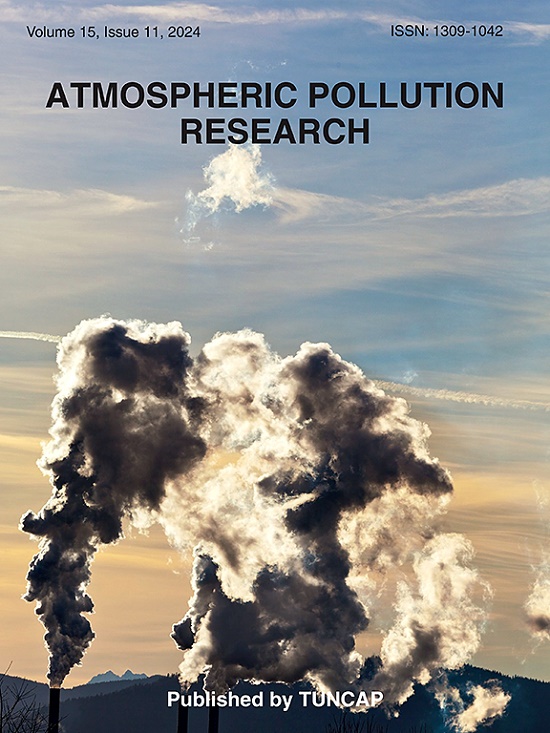Evaluating the spatiotemporal variations in atmospheric CO2 concentrations in China and identifying factors contributing to its increase
IF 3.9
3区 环境科学与生态学
Q2 ENVIRONMENTAL SCIENCES
引用次数: 0
Abstract
Understanding the patterns and trends of atmospheric carbon dioxide (CO2) is essential for comprehending the global carbon cycle and making accurate future climate predictions. CO2 levels are influenced by complex and often interrelated factors, requiring innovative approaches that can tie place-specific factors with CO2 concentrations. This study utilized the Orbiting Carbon Observatory-2 (OCO-2) data to explore the changes of CO2 concentrations in China over the past decade. Additionally, climate parameters, vegetation cover, and anthropogenic activities were combined to explain temporal and spatial changes in CO2 concentrations, using Geodetector and Multiscale Geographically Weighted Regression (MGWR) model. The results revealed a consistent increase (2.54 ppm/yr) and significant spatial agglomeration (High-High cluster in the east, Low-Low cluster in the west) of CO2 concentrations in China. The spatial location (q = 0.68) emerged as the primary determinant of CO2 levels, with population variable (q = 0.55) representing the secondary influencing factor. The interactions among natural elements and anthropogenic activities had substantially elevated CO2 levels. Compared to the Geographically Weighted Regression (GWR), and Ordinary Least Squares (OLS) models, the MGWR model demonstrated superior capability in revealing the varying spatial scales of influence among different variables, making it more suitable for investigating the impacts of multiple factors on atmospheric CO2 concentrations. The MGWR revealed significant variations in the optimal bandwidths among different explanatory variables, with temperature, precipitation, and LAI operating at much smaller scales. The findings are expected to provide valuable insights into regional processes influencing CO2 concentrations and the development of targeted interventions.
中国大气CO2浓度时空变化特征及影响因素分析
了解大气二氧化碳(CO2)的模式和趋势对于理解全球碳循环和准确预测未来气候至关重要。二氧化碳水平受到复杂且往往相互关联的因素的影响,需要创新的办法,将特定地点的因素与二氧化碳浓度联系起来。本研究利用轨道碳观测卫星OCO-2数据,探讨了近十年来中国CO2浓度的变化。此外,利用地理探测器和多尺度地理加权回归(MGWR)模型,结合气候参数、植被覆盖和人为活动来解释CO2浓度的时空变化。结果表明,中国CO2浓度呈持续上升趋势(2.54 ppm/yr),且呈明显的空间集聚(东高西低)。空间位置(q = 0.68)是CO2水平的主要影响因素,人口变量(q = 0.55)是次要影响因素。自然因素与人为活动的相互作用使CO2水平显著升高。与地理加权回归(GWR)和普通最小二乘(OLS)模型相比,MGWR模型在揭示不同变量之间影响的空间尺度上表现出更强的能力,更适合研究多因素对大气CO2浓度的影响。MGWR的最优带宽在不同的解释变量之间存在显著差异,温度、降水和LAI在更小的尺度上运行。预计这些发现将为影响二氧化碳浓度的区域过程和制定有针对性的干预措施提供有价值的见解。
本文章由计算机程序翻译,如有差异,请以英文原文为准。
求助全文
约1分钟内获得全文
求助全文
来源期刊

Atmospheric Pollution Research
ENVIRONMENTAL SCIENCES-
CiteScore
8.30
自引率
6.70%
发文量
256
审稿时长
36 days
期刊介绍:
Atmospheric Pollution Research (APR) is an international journal designed for the publication of articles on air pollution. Papers should present novel experimental results, theory and modeling of air pollution on local, regional, or global scales. Areas covered are research on inorganic, organic, and persistent organic air pollutants, air quality monitoring, air quality management, atmospheric dispersion and transport, air-surface (soil, water, and vegetation) exchange of pollutants, dry and wet deposition, indoor air quality, exposure assessment, health effects, satellite measurements, natural emissions, atmospheric chemistry, greenhouse gases, and effects on climate change.
 求助内容:
求助内容: 应助结果提醒方式:
应助结果提醒方式:


